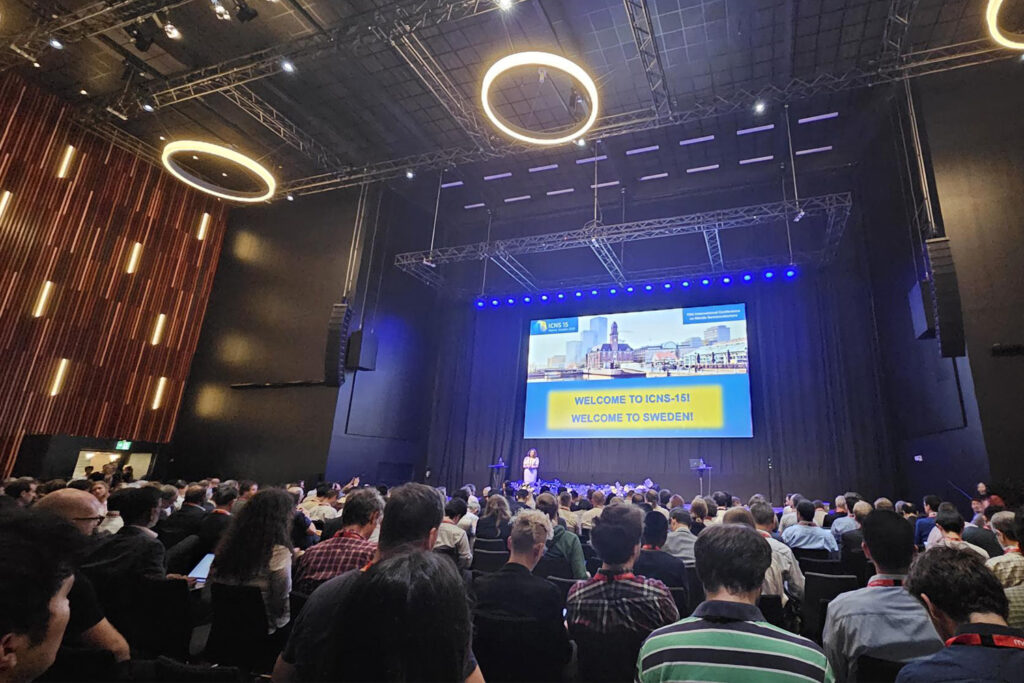Link to Microwave Journal article – September 16, 2024
1. You founded SweGaN a decade ago. Can you tell us a bit about your background and the process that led to the founding of SweGaN? What did you and the team see as the unmet need?
I moved from Taiwan to Sweden in 2009 to pursue a Ph.D. program at Linköping University, focusing on MOCVD growth of GaN-based high electron mobility transistor (HEMT) structures. I always find it more meaningful and motivating to turn research into products. So, in the second year of my PhD, I asked my supervisor though I had not learned much about MOCVD, “Why don’t we start a company producing GaN-on-SiC epiwafers?” He looked at me with a smile, but he didn’t say yes to this crazy idea. Two years later, he dropped by my office one day afternoon and said, “Perhaps now is the time to start a company.”
At the time, two major system manufacturers in Sweden, both Ericsson and Saab, had put GaN in their roadmaps for RF components. And in Europe we saw an opportunity to be part of the European defense GaN supply chain.
2. Can you describe the products and services that SweGaN provides?
SweGaN specializes in developing and producing GaN-on-SiC HEMT epitaxial wafers, including our unique buffer-free GaN-on-SiC epitaxial solutions, QuanFINE®. We leverage a broad range of epitaxy technologies to master interface engineering, epitaxial layer growth and structure design to provide custom engineering services, allowing clients to obtain GaN-on-SiC epiwafers tailored to their specific needs. This service includes optimizing the epiwafer structure and properties for specific technologies and applications, ensuring that customers get the best performance for their devices.
We also offer extensive technical support to our trusted partners, from advanced material analysis to device prototyping and characterizations. This service is particularly valuable for device makers and system manufacturers working on advanced technologies that require specialized expertise in material engineering.
3. Can you tell us a little bit about SweGaN’s “metrics”: its locations, the number of employees, patents or any of the metrics that will give our readers a better understanding of the company?
Our headquarters and new high-capacity production facility are located at the Innovative Materials Arena (IMA), a cluster for innovative materials located in Linköping, Sweden.
We currently have a staff of roughly over 30 people and more than 20 active recurring customers. We also have long-standing and close collaboration with Linköping University, Chalmers University of Technology and other Swedish and EU research institutions. With our strong patent portfolio and deep know-how, we have developed more than 100 epitaxial structures for different device technologies for both RF and power devices.
4. You refer to your QuanFINE™ growth technology as “ground-breaking”? Can you describe that process in more detail? What differentiates that technology and process?
Over the last two decades, the epitaxy of GaN-based HEMT structures grown on foreign substrates has been adapting the conventional method as invented for GaN LEDs that requires a “thick” buffer layer, typically 1.5 µm to 5 µm depending on the choice of the substrate, to make the structural properties of the epitaxial stack sufficiently high for device purposes. The thing is, if thin layers can do the job, no one would like to make them thick. The ground we break is that we manage to significantly reduce the total thickness of the epitaxial stack to less than 0.5 µm or even less than 0.3 µm, without compromise in the structural properties. Our new epitaxy process involves an innovative interface engineering called transmorphic heteroepitaxy, where orderly vacancy is used to manage the lattice mismatch between the first epitaxial layer and the SiC substrate.
As a result, the performance of the material without the conventional thick buffer at the device level is enhanced in many aspects, including less trapping, much stronger breakdown strength, improved linearity and best-in-class thermal properties. The production cycle is also much shorter.
5. You provide GaN-on-SiC growth technology, but you list electric vehicles, solar inverters and power supplies as target markets that have traditionally used GaN-on-silicon technology and products. What are the advantages of your technology, and is it competitive with the price of GaN-on-silicon?
We don’t aim to compete with GaN-on-Si. The trend we have seen is that the majority of GaN-on-Si power players have been focused on making the GaN-on-Si power devices cost-effective enough to replace legacy Si-based power devices. When it comes to high-voltage and high-power devices for improved efficiency, people would jump over GaN power devices and consider SiC power devices instead, because the performance and reliability of GaN are not there yet, after two decades of efforts.
We believe our buffer-free GaN-on-SiC approach has a chance to be an alternative to SiC power devices, especially when the footprint and the efficiency of the power modules are critical for the system. Our approach combines the strengths of GaN and SiC. The only shortcoming is the cost of the SiC substrates, which has been declining over time and will continue to do so, thanks to the economies of scale in the SiC material industry.
6. What are SweGaN’s most significant market opportunities today and how do you see that changing in the future?
The demand from the defense industry is very solid today, and it will continue to be strong. We also see opportunities on the horizon in the new RF technologies used for 5G Advanced and 6G in telecom. The opportunities in the power industry will need more time to cook, where the field is experiencing a downturn in the semiconductor cycle at this time.
7. SweGaN recently announced a strategic investment from and joint product development with RFHIC. Can you describe what the means for SweGaN?
The strategic investment will support SweGaN’s capacity expansion plan of its best-in-class GaN-on-SiC epitaxial wafers and accelerate joint product developments with RFHIC.
RFHIC is the leading RF GaN innovator. They will be able to advance SweGaN’s position in multiple application areas important to our growth.
8. What is the focus of your current development efforts and how do you see those changing in the future? Has the engagement with RFHIC changed that trajectory?
We have been focused on maturing our manufacturing capability and strengthening supply chain resilience. Efficiently producing low-volume diversified products with consistency for customer product qualifications is our primary goal right now. Our partnership with RFHIC strengthens that trajectory.
9. You unveiled a new tagline for the company; “The power is in the layers.” Can you tell us what that means to SweGaN?
We believe the material holds vast untapped potential, awaiting discovery, enhancement and utilization through advanced engineering. Our mission is to harness the tremendous power of GaN, releasing the material’s full potential and empowering our customers to pioneer and innovate the next generation of high-power, high-frequency semiconductor devices. We are dedicated to this mission.
Executive Interview: Jr-Tai (Ted) Chen, Founder and CEO of SweGaN
Join this exclusive Microwave Journal interview with SweGaN CEO, Jr-Tai Chen.
Related News
Linköping headquarters
IMA 1, Pursergatan 1
58278 Linköping, Sweden
info@swegan.se
© 2025 SweGaN® All rights reserved
Privacy Policy


